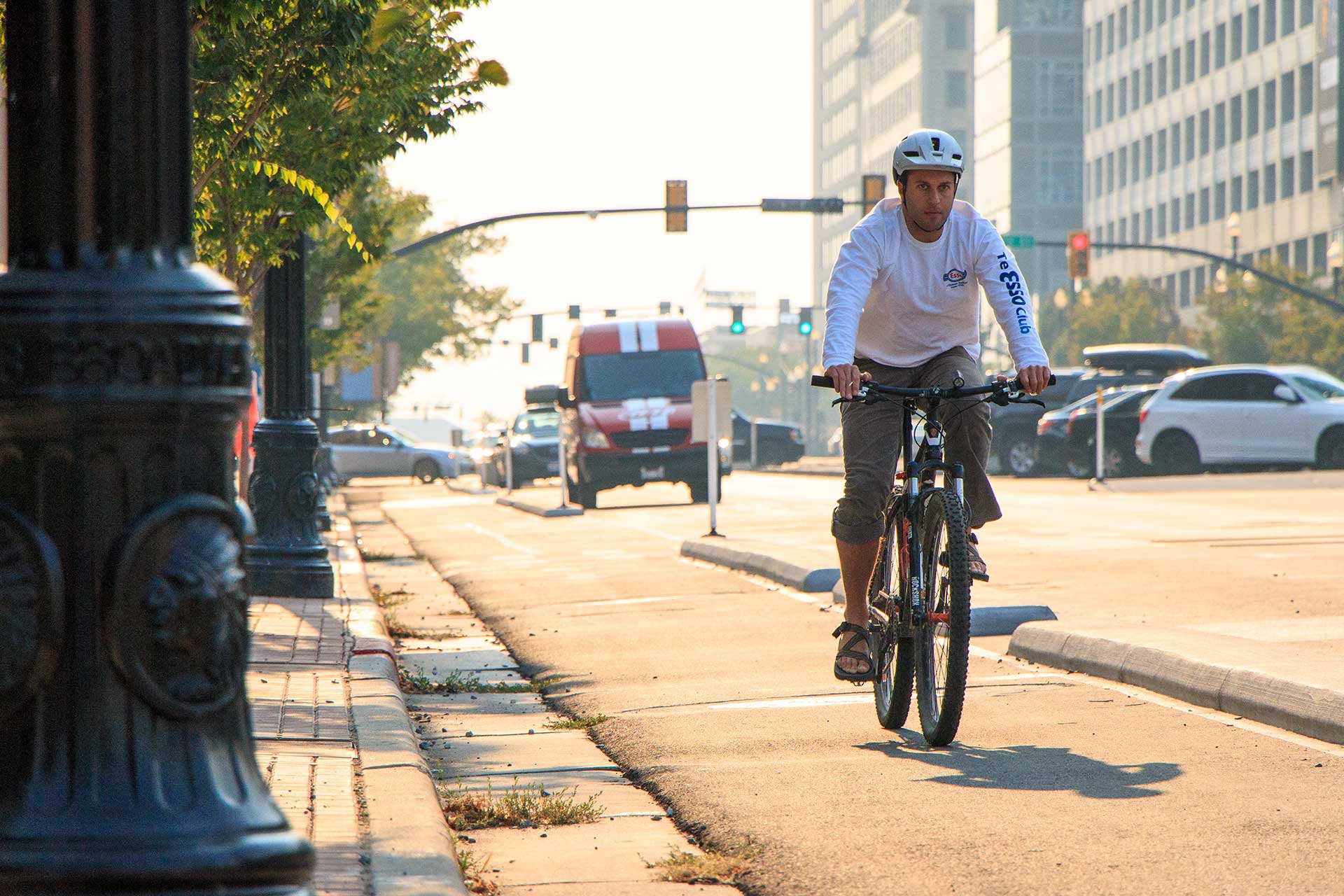
By Maria Archibald, Sustainability Office
Are you looking for ways to improve your physical and mental health? Wishing you had more time to exercise and enjoy the outdoors?
Try activating your commute to campus, and you may find that you feel healthier and happier. The weather is beginning to change, but don’t let that stop you from going outside and staying active, says Ginger Cannon, active transportation manager at the University of Utah. “Just get out there and try it – you may find the benefits addictive.”
Active transportation, which involves walking, biking, or rolling to your destination, has many documented benefits, Cannon says. Active transportation builds community, improves personal health and wellness, and improves our air quality.
“When you bike or when you board or you’re on your scooter, you are part of a community that uses human power to get where you need to go,” Cannon explains. Cannon often hears from year-round active commuters who feel empowered by their habits. “They feel very free and they love that they’re part of this community that does this every day,” she says. “People even send me pictures of the miles on their bike odometers because they are so proud of their active commute.”
The health benefits of transportation are both mental and physical. Not only do active commuters get exercise on their way to and from the U, but there’s also research to show that bicyclists are the happiest commuters.
Active transportation also benefits the environment. “Active transportation improves our air quality,” Cannon says. “We talk so much about vehicle emissions being 50% of our air pollution problem, but if we were all out walking, biking, and rolling more, we wouldn’t be contributing to those harmful emissions.”
Ready to start walking, biking, or rolling to campus? Here’s what you need to know to get started:
Stay safe!
“Walking, biking, and rolling are safe transportation choices, especially during the pandemic,” Cannon says. But all forms of transportation have risks, and in order to stay safe while commuting to work, there are some key steps you must take:
- Be aware of your surroundings. Take out the headphones and look up from your phone screen.
- Always wear a helmet.
- Check tires, chains, and brakes frequently. Visit the Campus Bike Shop for low-cost repairs.
- Wear bright colored or reflective clothing and use lights or reflectors when riding at night.
- Ride in the direction of traffic, not against it.
Perhaps most importantly, Cannon reminds the campus community to slow down and remember that pedestrians always have the right of way. Per University policy, motorized devices on campus sidewalks must not exceed 5 miles per hour, and non-motorized devices like bikes and skateboards must not exceed 10 miles per hour. “Speed kills,” Cannon says. “No one should have to suffer serious injury or lose their life because you’re in a hurry.”
Park and lock up!
When you arrive on campus, park your device in a designated parking area. The university has more than 3,000 bicycle parking spaces at racks across campus, most of which are located within 50 feet of building entrances.
There are also secure indoor parking spaces available in many buildings and parking garages on campus. Check the Campus Map to locate indoor and outdoor parking spaces for your device.
When you park, make sure to securely lock the device. “We don’t have a lot of bicycle theft, but I’m seeing an uptick in our housing and residential areas with the opening of Kahlert Village,” Cannon says. She encourages everyone to use a U-lock, which can be purchased at the Campus Store. Cannon also suggests registering your bike with Campus Police and online at Bike Index, which helps recover stolen bicycles.
Know the rules.
Cannon reminds active commuters to know their rights and take their responsibilities seriously. “On a bicycle, under state law, you are a vehicle,” she says. “You must follow all traffic rules and you have the same responsibilities and the rights to the road that a vehicle does.”
The University has their own rules about devices traveling on campus. For more information, review the University regulations outlined in Policy 3-232.
With just a few simple steps, you’re ready to start your active commute! Walk, bike, or roll to campus to enhance your physical and mental health, improve our air quality, and build our active commuting community!
